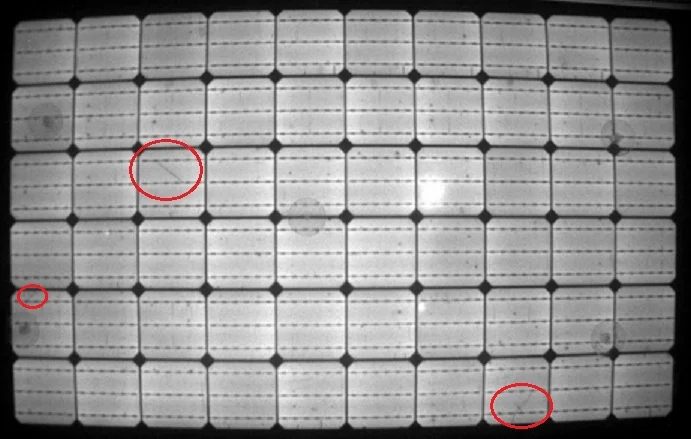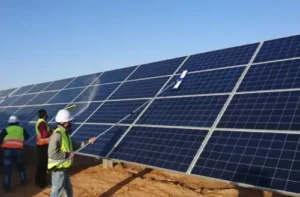Unveiling the Enigma of Micro-Cracks
Solar panels, the heralds of renewable energy, harness sunlight and convert it into electricity, promising a sustainable future. Yet, beneath their gleaming surfaces lies a hidden menace: micro-cracks. What are these tiny fissures, and why do they form? Join us on an exploratory journey as we delve deep into the realm of solar panel intricacies to uncover the truth behind micro-cracks and their generation.
Shedding Light on Micro-Cracks
Before we embark on our quest, let’s shed some light on what micro-cracks truly are. Micro-cracks refer to minuscule fractures that occur on the surface of solar panels, often invisible to the naked eye. These imperfections, though tiny, can wield significant repercussions, impacting the efficiency and longevity of solar panels.

Understanding the Genesis of Micro-Cracks
Now, the burning question arises: why do these micro-cracks manifest? Several factors contribute to their formation, ranging from environmental stressors to manufacturing defects. Let’s delve into the primary culprits:
- Thermal Cycling: The relentless cycle of heating and cooling, induced by fluctuating temperatures, exerts immense pressure on solar panels, leading to the emergence of micro-cracks over time.
- Mechanical Stress: External forces such as hailstorms, debris impact, and even the weight of accumulated snow can subject solar panels to mechanical stress, instigating the formation of micro-cracks.
- Material Defects: Imperfections in the materials used during the manufacturing process can serve as breeding grounds for micro-cracks, compromising the structural integrity of solar panels.
- Installation Errors: Improper installation techniques, such as overtightening mounting hardware or inadequate support structures, can exacerbate stress concentrations, paving the way for micro-cracks to develop.
Exploring the Ramifications of Micro-Cracks
The consequences of micro-cracks extend far beyond mere aesthetic imperfections. These fissures can significantly impede the performance of solar panels, diminishing their efficiency and output. Moreover, micro-cracks serve as entry points for moisture infiltration, exacerbating corrosion and potentially causing irreversible damage to critical components.
Unraveling Solutions: Preventing Micro-Cracks
In the face of this looming threat, proactive measures must be taken to mitigate the formation of micro-cracks and safeguard the integrity of solar panels. Here are some effective strategies:
- Regular Maintenance: Implementing routine inspections and maintenance protocols can help detect early signs of micro-cracks and address them promptly before they escalate into larger issues.
- Advanced Coating Technologies: Utilizing advanced coating technologies, such as anti-reflective coatings and protective films, can provide an additional layer of defense against environmental stressors, reducing the likelihood of micro-crack formation.
- Innovative Cleaning Solutions: Embracing innovative cleaning solutions, such as Taypro’s waterless microfiber-based cleaning robots, can revolutionize the maintenance process, ensuring pristine cleanliness without risking micro-crack generation. Taypro’s robots, certified by the National Institute of Solar Energy Gurgaon and endorsed by module manufacturers like RenewSys, Waaree guarantee optimal performance and longevity of solar panels, even with daily cleaning routines.
- Temperature Management: Implementing temperature management systems, such as passive ventilation or active cooling mechanisms, can help mitigate thermal stresses and minimize the risk of micro-crack formation.
FAQs: Demystifying Common Queries
Q1: Can micro-cracks be repaired?
A1: While small micro-cracks can sometimes be repaired using specialized techniques, extensive damage may necessitate panel replacement for optimal performance.
Q2: Do micro-cracks affect solar panel efficiency?
A2: Yes, micro-cracks can impair the efficiency of solar panels by disrupting the flow of electricity and reducing overall output.
Q3: How can I detect micro-cracks on my solar panels?
A3: Micro-cracks are often challenging to detect visually. However, conducting regular inspections and utilizing specialized equipment, such as infrared imaging, can help identify potential micro-crack formations.
A Brighter Future Ahead
Micro-cracks pose a formidable challenge in the realm of solar energy, threatening the performance and longevity of solar panels. However, with proactive maintenance measures and innovative solutions like Taypro’s cleaning robots, we can mitigate the risks associated with micro-crack generation and ensure a brighter, more sustainable future powered by clean energy. Remember, the journey towards a greener tomorrow begins with safeguarding the foundations of today’s solar infrastructure. Embrace preventive measures, stay vigilant, and together, let’s illuminate the path towards a solar-powered world! Visit Taypro’s website for cutting-edge solutions and expert insights!





